1. Seasons Overview: Matching Your Trip to Glacier’s Rhythm
1.1 Summer pulse for classic first-timers
If your bucket list includes ridge-line vistas, boat tours on alpine lakes, and long-hike daylight, mid-summer delivers the archetypal experience many imagine in A Guide to the Best Time to Visit Montana for Glacier National Park. Trails are largely snow-free at higher elevation, services run on full schedules, and daylight can stretch well past dinner—perfect for unhurried sunsets.
1.2 Spring thaw for peace and waterfalls
Late spring trades fully open high-country routes for thunderous waterfalls, wildlife activity at lower elevations, and a calmer pace. Valley trails open first; higher passes still wear winter’s last brushstrokes, creating a dramatic snowline backdrop for your photos.
1.3 Autumn glow for color and crisp air
Fall brings golden larch and fewer visitors. Cool mornings, warm afternoons, and excellent visibility make this a favorite for hikers and photographers seeking serenity. It’s the moment when the park exhales—and savvy travelers lean into that quiet.
2. Road Access and Logistics: The Heartbeat of a Glacier Trip
2.1 Going-to-the-Sun Road timing
This legendary alpine highway is the trip’s metronome. Its full traverse typically becomes drivable once deep snowpack recedes, and portions may close again with early storms. Your dates shape what sections you can enjoy; flexibility rewards you with safer, less crowded drives.
2.2 Shuttles, parking, and permits
Peak months often require timed entries or shuttle strategies. Early starts help with parking near marquee trailheads, while mid-afternoon entries can surprise you with openings as day-use visitors depart. Build buffer time into your plan—mountains set the schedule, not planners.
2.3 Two gateways, two vibes
West Glacier offers easy services and lake access; St. Mary and Many Glacier on the east feel wilder and wind-kissed. Many travelers design a “west-to-east” arc to see both personalities in one trip.
3. Weather & What to Pack: Mountain Logic 101
3.1 Layers win every season
Mountain weather swings quickly. Even in July, a sunny ridge can turn brisk with a passing cloud. Pack a breathable base, insulating mid-layer, and a waterproof shell; add sun protection, a warm hat, and trail-worthy shoes. Your comfort equals your range—that’s why this gear advice appears repeatedly in A Guide to the Best Time to Visit Montana for Glacier National Park.
3.2 Afternoon storms and morning calm
Mornings are often steadier; afternoons can bring wind or showers. Hike early, photograph late, and rest mid-day when glare is harsh and parking is tight.
4. Wildlife & Bloom Calendar: See More, Disturb Less
4.1 Who’s out and when
Bighorn sheep and mountain goats favor wind-scoured ridges in summer; moose browse valley wetlands at dawn; bears roam for berries late summer into fall. Keep distance, carry spray where advised, and give animals the right-of-way—your best sighting is a respectful one.
4.2 Wildflowers and larches
Early to mid-summer explodes with paintbrush and lupine in subalpine meadows; by late September, western larch turn a remarkable gold—one of the park’s underrated spectacles.
5. Crowds, Costs & Quiet Corners: Strategy Over Luck
5.1 Time-of-day matters more than you think
Arrive before breakfast or after 3 p.m. to unlock trailhead parking and softer light. Midday belongs to picnic naps and lake dips. This simple cadence dramatically upgrades any itinerary described in A Guide to the Best Time to Visit Montana for Glacier National Park.
5.2 Alternate valleys and back doors
When marquee spots are busy, steer to North Fork, Two Medicine, or Many Glacier. These areas keep the drama—just without the noise.
6. Photography & Golden Hours: Light Is Your Luxury
6.1 Sunrise choreography
Alpenglow kisses east-facing peaks first; lakes act as mirrors when wind is calm at dawn. Scout compositions the day prior so you can move with intention when the sky wakes.
6.2 After-dark rewards
On clear summer nights, the Milky Way sprawls over peaks; in shoulder seasons, crisp air yields pin-sharp stars. Bring a sturdy tripod and patience—silence is part of the shot.
7. Real Stories & Itineraries: How Timing Changes Everything
7.1 Maya’s August ridge walk
Maya, a first-time visitor, planned for mid-August to maximize open trails. She hiked from a popular pass to a wildflower basin, spotting mountain goats browsing in the distance. Afternoon clouds stacked up, but her early start meant she was descending as raindrops began—classic Glacier timing strategy.
7.2 Theo’s June waterfall chase
Theo chose late June for water volume—he wanted to feel the park’s snowmelt heartbeat. Lower-elevation trails were fully in, cascades thundered, and he pieced together a perfect day of short hikes linked by lakeside picnics.
7.3 A five-day framework
Days 1–2: West Glacier lakes and a valley hike; Day 3: scenic road segments and boardwalks; Day 4: east-side meadows and wildlife dawn watch; Day 5: a boat-hike combo to a hanging valley. Flex pieces around weather and road status.
8. Shoulder-Season Smart Travel: Spring & Fall Tradeoffs
8.1 Why many return in September
Cooler days, thinner crowds, energized wildlife, and golden hillsides—autumn compresses Glacier magic into a slower rhythm. Services may scale down; the payoff is space.
8.2 Spring’s quiet drama
Late spring offers kinetic rivers, migrating birds, and the feel of a park waking up. Not every trail will be ready, yet the ones that are feel like your own.
9. Winter Wonder & Safety: Snow Country on Your Terms
9.1 Why consider a cold-season visit
Winter reframes the park as a cathedral of snow. Cross-country routes, ranger programs, and lodge fires create a contemplative pace. Prepare for short days, cold temps, and magical silence.
9.2 Safety first
Carry traction where appropriate, mind avalanche forecasts in backcountry contexts, and respect closures. In winter, conservative choices are the adventurous ones.
10. Plan with Confidence: Dates, Lodges, and Details with 【Refined Travel 】
10.1 How timing shapes availability
Iconic lodges and in-park stays book far ahead for peak months. Shoulder seasons open doors to upgrades and quieter experiences. Share your priorities—wildlife, waterfalls, or color—and we’ll map your dates to those moments.
10.2 What 【Refined Travel 】 does for you
We sync your trip window with likely road access, sunrise angles, and crowd patterns; secure the right rooms on the right side of the park; arrange private guides and transfers; and build weather-proof alternates. Our Montana specialists live the advice in A Guide to the Best Time to Visit Montana for Glacier National Park so your days feel effortless.
10.3 Ready when you are
If Glacier is calling, let 【Refined Travel 】 tailor your dates and daily flow. Choose your season, tell us your hiking comfort, and we’ll craft a plan that trades stress for wonder—and turns timing into your biggest advantage.



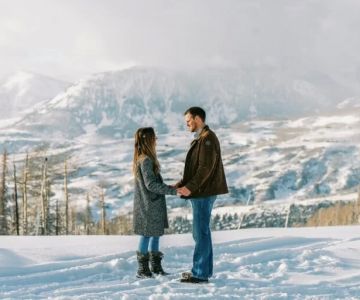

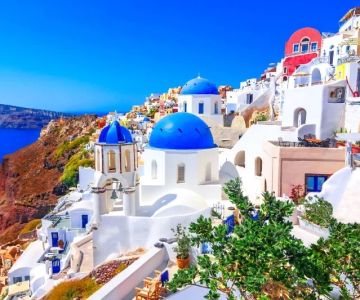
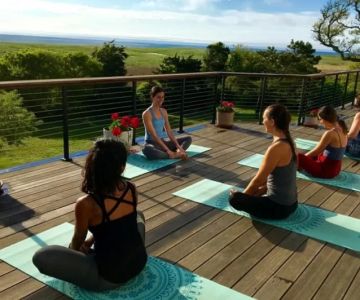
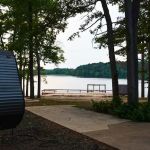 Lost Frontier RV Park and Bar & Grill4.0 (472 reviews)
Lost Frontier RV Park and Bar & Grill4.0 (472 reviews)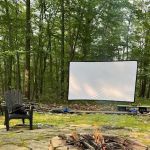 Camp Cruser5.0 (3 reviews)
Camp Cruser5.0 (3 reviews)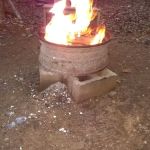 Mohawk RV- Troutman4.0 (33 reviews)
Mohawk RV- Troutman4.0 (33 reviews) Greenfield Mobile Home Estates3.0 (43 reviews)
Greenfield Mobile Home Estates3.0 (43 reviews) Missouri RV Park Campground4.0 (147 reviews)
Missouri RV Park Campground4.0 (147 reviews)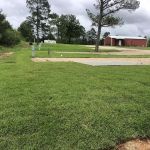 RV at Midway Park4.0 (11 reviews)
RV at Midway Park4.0 (11 reviews)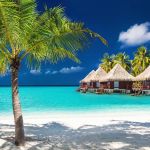 Exclusive Travel Packages for First-Class Travelers: A Guide to Luxury Vacations
Exclusive Travel Packages for First-Class Travelers: A Guide to Luxury Vacations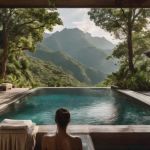 Refined Travel Experiences in Southeast Asia: Explore Luxury & Unique Destinations
Refined Travel Experiences in Southeast Asia: Explore Luxury & Unique Destinations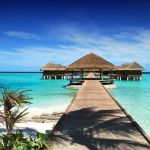 How to Make the Most of Luxury Vacation Deals: Expert Tips for Savvy Travelers
How to Make the Most of Luxury Vacation Deals: Expert Tips for Savvy Travelers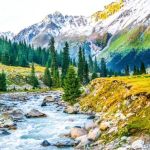 How to Enjoy a Refined Travel Experience in the Mountains
How to Enjoy a Refined Travel Experience in the Mountains Refined Travel Itineraries for Art and Culture Lovers: Explore the World of Art and History
Refined Travel Itineraries for Art and Culture Lovers: Explore the World of Art and History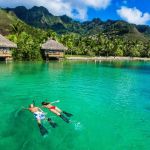 Most Luxurious Destinations for Honeymooners: Top Spots for Romance and Luxury
Most Luxurious Destinations for Honeymooners: Top Spots for Romance and Luxury